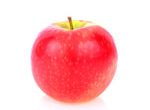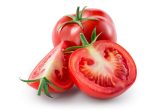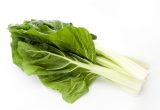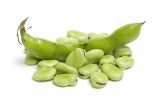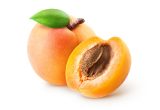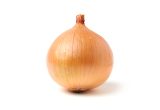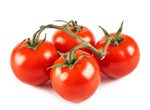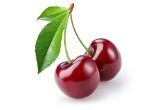Dandelion

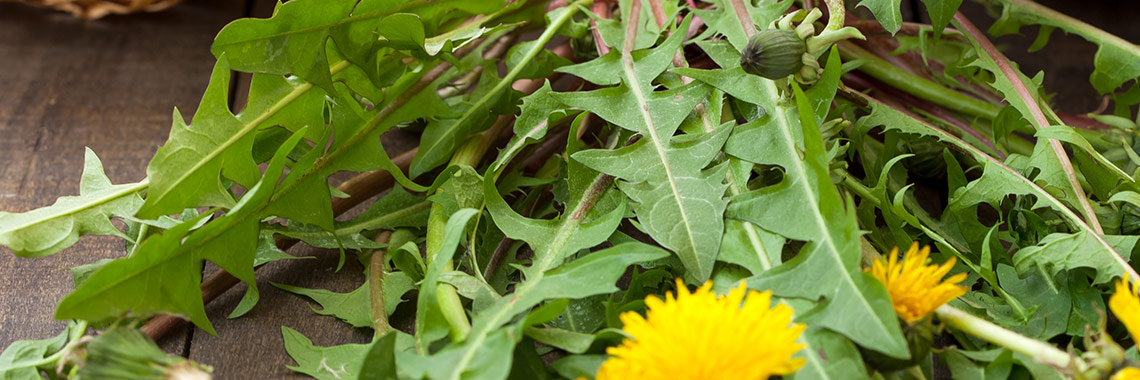
Description
- Dandelion (Taraxacum officinale) belongs to the Asteraceae family.
- It is a native European plant, widely distributed in the warm temperate zones of the northern hemisphere (Gonzales-Castejon, 2012).
PHYSICAL AND ORGANOLEPTIC CHARACTERISTICS
- Dandelion is a plant that can grow up to 0.6 m high. The toothed leaves, which vary in shape by the depth of the teeth, are arranged in a rosette at the base of the aerial part. All parts are edible: roots, leaves and flowers (Abbara, 2016; Grauso, 2019).
- The flower, as it is called, is actually a set of ligulate florets that make up a bright yellow flower head (Abbara, 2016).
- The petiole of the “Garnet Stem” variety is red, due to the presence of anthocyanins (polyphenols of the flavonoid family): Cyanidin-3-glucoside, Cyanidin-3-(“-malonyl)-glucoside (I-1) and (I-2) and Peonidin-3-(6”-malonyl)-glucoside (Gomez, 2018).
- The leaves contain a high content of chlorophyll a and b, giving them their green colour (Gomez, 2018).
COMPOSITION CHARACTERISTICS (excluding macronutrients, vitamins and minerals)
- One study found several polyphenols in dandelion flowers, including gallic acid (44.14 µg/g dry matter), rutin (18.66 µg/g dry matter), resveratrol (274.92 µg/g dry matter), vanillic acid (82.88 µg/g dry matter) and sinapic acid (593.04 µg/g dry matter) (Lopez-Garcia, 2013). Flavones are also found: luteolin and chryoeriol (Milek, 2019).
- Taraxasterol (triterpene) has also been isolated from dandelion (Liu, 2013). This is reported to have anti-inflammatory and antioxidant effects, which may notably allow it to be beneficial in certain conditions such as alcohol-damaged liver, high-fat diet (Xu, 2018; Li, 2020), stomach cancer (Chen, 2020) and colon inflammation (Che, 2019; Chen, 2019).
- Dandelion leaves contain organic acids including, from most to least abundant: malic acid, malonic acid, tartaric acid, citric acid, quinic acid, succinic acid, acetic acid and formic acid (Grauso, 2019).
- Like the flowers, the leaves also contain polyphenols such as flavonoids (luetolin and derivatives, quercetin derivatives) and phenolic acids (caffeic acid and caffeoyl derivatives, chicoric acid) (Flores-Oceloti, 2018; Grauso, 2019; Milek, 2019).
- The leaves also contain carotenoids, such as β-carotene, lutein and violaxanthin. On the other hand, the chlorophyll and carotenoid content depends on the variety and location of the crop (Gomez, 2018).
- The presence of polyphenols and carotenoids gives dandelion antioxidant activity (Gomez, 2018; Aremu, 2019), which is greater in leaves than in flowers (Milek, 2019)
- Luteolin and derivatives of caffeic and caffeoylquinic acid have shown an antiviral effect (Flores-Oceloti, 2018).
- Luteolin is also thought to be an anti-diabetic by inhibiting α-glucosidase, which prevents the digestion of carbohydrates (Choi, 2018).
- In addition, chicoric acid, taxasterol, chlorogenic acid, and lactone sesquiterpenes contained in dandelion also help fight type 2 diabetes. Lactone sesquiterpenes are usually extracted from the roots, but are also contained in the leaves of dandelion, such as taraxinic acid and β-D glucopyranoside (Wirngo, 2016).
- The main components identified in a hexane extract of dandelion leaves are phytol, lupeol, taraxasteryl acetate, β-sitosterol, α-amyrin, β-amyrin and cycloartenol acetate (Ivanov, 2018). This fraction also exhibits antioxidant and antimicrobial activity (Ivanov, 2018).
RAW
The following values are approximate and depend on variety, season, ripeness, cultivation conditions, etc.
Dandelion provides an average of 48.70 calories (kcal) per 100 g, i.e. 204 kJ.
COMPOSITION TABLES
For each nutrient, the tables provide information on the content, the minimum and maximum values, as well as the percentage of the Dietary Reference Values (DRVs) for 100 g net of raw dandelions.
MACRONUTRIENTS
| Constituent (g) | Average content |
Min-Max per 100g |
DRV% |
|---|---|---|---|
| Water | 85,30 | 85 - 85,60 | - |
| Fibers | 2,70 | 1,20 - 3,50 | - |
| Carbohydrates | 6,10 | - | 2,35 |
| Sugars | 0,71 | - | 0,79 |
| Lipids | 0,85 | 0,70 - 1 | 1,21 |
| Saturated fat | 0,17 | - | 0,85 |
| Protein | 2,91 | 2,70 - 3,13 | 5,82 |
| Constituent (g) | Amount | Min-Max | DRV% |
|---|---|---|---|
| Water | Ciqual 2020 | - | - |
| Fibers | Ciqual 2020 | - | - |
| Carbohydrates | Ciqual 2020 | - | Règlement (UE) N°1169/2011 du parlement Européen, et du conseil du 25 octobre 2011 |
| Sugars | Ciqual 2020 | - | Règlement (UE) N°1169/2011 du parlement Européen, et du conseil du 25 octobre 2011 |
| Lipids | Ciqual 2020 | - | Règlement (UE) N°1169/2011 du parlement Européen, et du conseil du 25 octobre 2011 |
| Saturated fat | Ciqual 2020 | - | Règlement (UE) N°1169/2011 du parlement Européen, et du conseil du 25 octobre 2011 |
| Protein | Ciqual 2020 | - | Règlement (UE) N°1169/2011 du parlement Européen, et du conseil du 25 octobre 2011 |
Zoom on carbohydrates
- Dandelion contains a quantity of carbohydrates (6.10 g per 100 g), higher than the average quantity present in raw vegetables (4.45 g per 100 g).
- Dandelion is low in sugar* (0.71 g per 100 g) as it contains no more than 5 g per 100 g.
Zoom on fibres
- Dandelion provides a significant amount of fibre: 2.70 g per 100 g.
- This amount is higher than the average quantity of fibre found in raw vegetables (2.43 g per 100 g).
Zoom on proteins
- The protein content (2.91 g per 100 g) is higher than the average amount found in raw vegetables (1.87 g per 100 g).
Zoom on lipids
- The fat content of dandelion (0.85 g per 100 g) is higher than the average amount of this macronutrient found in raw vegetables (0.56 g per 100 g).
- Dandelion is low in fat* as it contains no more than 3 g per 100 g.
*Regulation (EC) No 1924/2006 of the European Parliament and of the Council of 20 December 2006 on nutrition and health claims made on foods.
MINERALS AND TRACE ELEMENTS
| Constituent | Average content |
Min-Max per 100g |
DRV% |
|---|---|---|---|
| Calcium (mg) | 62,30 | 19,50 - 187 | 7,79 |
| Chloride (mg) | - | - | - |
| Copper (mg) | 0,067 | 0,055 - 0,17 | 6,70 |
| Iron (mg) | 3,10 | - | 22,14 |
| Iodine (µg) | 0,40 | - | 0,27 |
| Magnesium (mg) | 13,20 | 9,50 - 36 | 3,52 |
| Manganese (mg) | 0,16 | 0,091 - 0,34 | 8 |
| Phosphorus (mg) | 66 | - | 9,43 |
| Potassium (mg) | 397 | - | 19,85 |
| Selenium (µg) | < 2,20 | - | - |
| Sodium (mg) | 87,80 | 76 - NC | - |
| Zinc (mg) | 0,21 | NC - 0,41 | 2,10 |
| Constituent | Amount | Min-Max | DRV% |
|---|---|---|---|
| Calcium (mg) | Ciqual 2020 | - | Règlement (UE) N°1169/2011 du parlement Européen, et du conseil du 25 octobre 2011 |
| Chloride (mg) | Ciqual 2020 | - | Règlement (UE) N°1169/2011 du parlement Européen, et du conseil du 25 octobre 2011 |
| Copper (mg) | Ciqual 2020 | - | Règlement (UE) N°1169/2011 du parlement Européen, et du conseil du 25 octobre 2011 |
| Iron (mg) | Ciqual 2020 | - | Règlement (UE) N°1169/2011 du parlement Européen, et du conseil du 25 octobre 2011 |
| Iodine (µg) | Ciqual 2020 | - | Règlement (UE) N°1169/2011 du parlement Européen, et du conseil du 25 octobre 2011 |
| Magnesium (mg) | Ciqual 2020 | - | Règlement (UE) N°1169/2011 du parlement Européen, et du conseil du 25 octobre 2011 |
| Manganese (mg) | Ciqual 2020 | - | Règlement (UE) N°1169/2011 du parlement Européen, et du conseil du 25 octobre 2011 |
| Phosphorus (mg) | Ciqual 2020 | - | Règlement (UE) N°1169/2011 du parlement Européen, et du conseil du 25 octobre 2011 |
| Potassium (mg) | Ciqual 2020 | - | Règlement (UE) N°1169/2011 du parlement Européen, et du conseil du 25 octobre 2011 |
| Selenium (µg) | Ciqual 2020 | - | Règlement (UE) N°1169/2011 du parlement Européen, et du conseil du 25 octobre 2011 |
| Sodium (mg) | Ciqual 2020 | - | - |
| Zinc (mg) | Ciqual 2020 | - | Règlement (UE) N°1169/2011 du parlement Européen, et du conseil du 25 octobre 2011 |
Zoom on minerals and trace elements
- Dandelion is a source of:
- iron as it provides the equivalent of 22.14% of DRVs, i.e. 3.10 mg per 100 g;
- potassium as it provides the equivalent of 19.85% of DRVs, i.e. 397 mg per 100 g.
- It also provides the equivalent of:
- 9.43% of DRVs for phosphorus, i.e. 66 mg per 100 g;
- 8% of DRVs for manganese, i.e. 0.16 mg per 100 g;
- 7.79% of DRVs for calcium, i.e. 62.30 mg per 100 g;
- 6.70% of DRVs for copper, i.e. 0.067 mg per 100 g.
- The other minerals and trace elements represent less than 4% of DRVs.
VITAMINS
| Constituent | Average content |
Min-Max per 100g |
DRV% |
|---|---|---|---|
| Provitamin A Beta-carotene (µg) | 5 850 | - | - |
| Vitamin A equivalent (µg) | 975 | - | 121,88 |
| Vitamin B1 (mg) | 0,19 | - | 17,27 |
| Vitamin B2 (mg) | 0,20 | 0,14 - 0,26 | 14,29 |
| Vitamin B3 (mg) | 0,80 | NC - 0,81 | 5 |
| Vitamin B5 (mg) | 0,084 | - | 1,40 |
| Vitamin B6 (mg) | 0,25 | - | 17,86 |
| Vitamin B9 (µg) | 27 | - | 13,50 |
| Vitamin C (mg) | 37,50 | 35 - 40 | 46,88 |
| Vitamin E (mg) | 3,44 | - | 28,67 |
| Vitamin K1 (µg) | 778 | - | 1 037,33 |
| Constituent | Amount | Min-Max | DRV% |
|---|---|---|---|
| Provitamin A Beta-carotene (µg) | Ciqual 2020 | - | - |
| Vitamin A equivalent (µg) | Calcul à partir de la valeur Provitamine A Béta-carotène* | - | Règlement (UE) N°1169/2011 du parlement Européen, et du conseil du 25 octobre 2011 |
| Vitamin B1 (mg) | Ciqual 2020 | - | Règlement (UE) N°1169/2011 du parlement Européen, et du conseil du 25 octobre 2011 |
| Vitamin B2 (mg) | Ciqual 2020 | - | Règlement (UE) N°1169/2011 du parlement Européen, et du conseil du 25 octobre 2011 |
| Vitamin B3 (mg) | Ciqual 2020 | - | Règlement (UE) N°1169/2011 du parlement Européen, et du conseil du 25 octobre 2011 |
| Vitamin B5 (mg) | Ciqual 2020 | - | Règlement (UE) N°1169/2011 du parlement Européen, et du conseil du 25 octobre 2011 |
| Vitamin B6 (mg) | Ciqual 2020 | - | Règlement (UE) N°1169/2011 du parlement Européen, et du conseil du 25 octobre 2011 |
| Vitamin B9 (µg) | Ciqual 2020 | - | Règlement (UE) N°1169/2011 du parlement Européen, et du conseil du 25 octobre 2011 |
| Vitamin C (mg) | Ciqual 2020 | - | Règlement (UE) N°1169/2011 du parlement Européen, et du conseil du 25 octobre 2011 |
| Vitamin E (mg) | Ciqual 2020 | - | Règlement (UE) N°1169/2011 du parlement Européen, et du conseil du 25 octobre 2011 |
| Vitamin K1 (µg) | Ciqual 2020 | - | Règlement (UE) N°1169/2011 du parlement Européen, et du conseil du 25 octobre 2011 |
Zoom on vitamins
- Dandelion is high in:
- vitamin K1 as it provides the equivalent of 1037.33% of DRVs, i.e. 778 µg per 100 g;
- vitamin A as it provides the equivalent of 121.88% of DRVs, i.e. 975 µg per 100 g;
- vitamin C as it provides the equivalent of 46.88% of DRVs, i.e. 37.50 mg per 100 g. According to the Ciqual 2020 table, dandelion is, after cooked kale, the vegetable that contains the most vitamin K1.
- It is also a source of:
- vitamin E as it provides the equivalent of 28.67% of DRVs, i.e. 3.44 mg per 100 g;
- vitamin B6 as it provides the equivalent of 17.86% of DRVs, i.e. 0.25 mg per 100 g;
- vitamin B1 as it provides the equivalent of 17.27% of DRVs, i.e. 0.19 mg per 100 g.
- In addition, dandelion contains significant amounts of vitamin B2 and vitamin B9. It provides the equivalent of:
- 14.29% of DRVs for vitamin B2, i.e. 0.20 mg per 100 g;
- 13.50% of DRVs for vitamin B9, i.e. 27 µg per 100 g.
- The other vitamins are present in smaller quantities, since they cover less than 6% of DRVs.
*Calculation made: Beta Carotene / 6 + retinol
POLYPHENOLS
| Constituent (mg) | Average content |
Min-Max per 100mg |
|---|---|---|
| Total polyphenols | 385,55 | 26 - 745,10 |
| Constituent (mg) | Amount | Min-Max |
|---|---|---|
| Total polyphenols | Phénol-Explorer version 3.6 Méthode utilisée : Dosage du folin | - |
Zoom on polyphenols
- Polyphenols are substances with an antioxidant effect.
- According to the folin dosage method, dandelion contains a significant amount of polyphenols, i.e. 385.55 mg per 100 g.
Nutrition and health claims
According to the definitions of nutrition claims as set out in Regulation (EC) No 1924/2006 on nutrition and health claims, and in view of the composition of dandelion, the following claims may be used:
NUTRITION CLAIMS OF DANDELION
- Low in fat (100 g of dandelion contain less than 3 g of fat)
- Low in sugar (100 g of dandelion contain no more than 5 g of sugar)
- Rich in vitamin K1 (100 g of dandelion provide more than 30% of DRVs)
- Rich in vitamin A (100 g of dandelion provide more than 30% of DRVs)
- Rich in vitamin C (100 g of dandelion provide more than 30% of DRVs)
- Source of vitamin E (100 g of dandelion provide more than 15% of DRVs)
- Source of iron (100 g of dandelion provide more than 15% of DRVs)
- Source of potassium (100 g of dandelion provide more than 15% of DRVs)
- Source of vitamin B6 (100 g of dandelion provide more than 15% of DRVs)
- Source of vitamin B1 (100 g of dandelion provide more than 15% of DRVs)
HEALTH CLAIMS (for a consumption of 100 g of dandelion)
Vitamin K1
- Vitamin K1 contributes to:
- maintenance of normal bones,
- normal blood clotting.
Vitamin A
- Vitamin A has a role in the process of cell specialisation.
- Vitamin A contributes to:
- maintenance of normal skin,
- maintenance of normal mucous membranes,
- maintenance of normal vision,
- normal iron metabolism,
- normal function of the immune system.
Vitamin C
- Vitamin C contributes to:
- normal function of the immune system during and after intense physical exercise,
- normal collagen formation for the normal function of blood vessels,
- normal collagen formation for the normal function of bones,
- normal collagen formation for the normal function of cartilage,
- normal collagen formation for the normal function of gums,
- normal collagen formation for the normal function of skin,
- normal collagen formation for the normal function of teeth,
- normal energy-yielding metabolism,
- normal functioning of the nervous system,
- normal psychological function,
- normal function of the immune system,
- protection of cells from oxidative stress,
- reduction of tiredness and fatigue,
- regeneration of the reduced form of vitamin E.
- Vitamin C increases iron absorption.
Vitamin E
- Vitamin E contributes to the protection of cells from oxidative stress.
Iron
- Iron contributes to:
- normal cognitive function,
- normal energy-yielding metabolism,
- normal formation of red blood cells and haemoglobin,
- normal oxygen transport in the body,
- normal function of the immune system,
- reduction of tiredness and fatigue,
- normal cognitive development of children.
- Iron plays a role in the process of cell division.
Potassium
- Potassium contributes to:
- normal functioning of the nervous system,
- normal muscle function,
- maintenance of normal blood pressure.
Vitamin B6
- Vitamin B6 contributes to:
- normal cysteine synthesis,
- normal homocysteine metabolism,
- normal energy-yielding metabolism,
- normal functioning of the nervous system,
- normal protein and glycogen metabolism,
- normal psychological function,
- normal red blood cell formation,
- normal function of the immune system,
- reduction of tiredness and fatigue,
- regulation of hormonal activity.
Vitamin B1 or thiamine
- Thiamine contributes to:
- normal energy-yielding metabolism,
- normal functioning of the nervous system,
- normal psychological function,
- normal function of the heart.
References
- Abbara A. Musée virtuel. Pissenlit [En ligne]. [Consulté le 28 avril 2020]. Disponible à l’adresse : http://www.aly-abbara.com/museum/photographie/Pissenlit/capitules-02.html
- Agence nationale de sécurité sanitaire de l’alimentation, de l’environnement et du travail. Table de composition nutritionnelle des aliments Ciqual 2020. Consultée le 07/09/2020 depuis le site internet Ciqual https://ciqual.anses.fr/
- Agence nationale de sécurité sanitaire de l’alimentation, de l’environnement et du travail. Table de composition nutritionnelle des aliments Ciqual pour le calcul des apports nutritionnels CALNUT 2020. Consultée le 07/09/2020 depuis le site internet Ciqual https://ciqual.anses.fr/
- Aremu OO, Oyedeji AO, Oyedeji OO, Nkeh-Chungag BN, Rusike CRS. In Vitro and In Vivo Antioxidant Properties of Taraxacum officinale in Nω-Nitro-l-Arginine Methyl Ester (L-NAME)-Induced Hypertensive Rats. Antioxidants (Basel). 2019;8(8):309.
- Che L, Li Y, Song R, Qin C, Hao W, Wang B, Yang L, Peng P, Xu F. Anti-inflammatory and anti-apoptosis activity of taraxasterol in ulcerative colitis in vitro and in vivo. Exp Ther Med. 2019;18(3):1745-1751.
- Chen W, Da W, Li C, Fan H, Liang R, Yuan J, Huang X, Yang R, Zhang J, Zhu J. Network pharmacology-based identification of the protective mechanisms of taraxasterol in experimental colitis. Int Immunopharmacol. 2019;71:259-66
- Chen W, Li J, Li C, Fan HN, Zhang J, Zhu JS. Network pharmacology-based identification of the antitumor effects of taraxasterol in gastric cancer. Int J Immunopathol Pharmacol. 2020;34:2058738420933107
- Choi J, Yoon KD, Kim J. Chemical constituents from Taraxacum officinale and their α-glucosidase inhibitory activities. Bioorg Med Chem Lett. 2018;28(3):476-81.
- Flores-Ocelotl MR, Rosas-Murrieta NH, Moreno DA, Vallejo-Ruiz V, Reyes-Leyva J, Domínguez F, Santos-López G. Taraxacum officinale and Urtica dioica extracts inhibit dengue virus serotype 2 replication in vitro. BMC Complement Altern Med. 2018;18(1):95.
- Gomez MK, Singh J, Acharya P, Jayaprakasha GK, Patil BS. Identification and Quantification of Phytochemicals, Antioxidant Activity, and Bile Acid-Binding Capacity of Garnet Stem Dandelion (Taraxacum officinale). J Food Sci. 2018;83(6):1569-78.
- González-Castejón M, Visioli F, Rodriguez-Casado A. Diverse biological activities of dandelion. Nutr Rev. 2012;70(9):534-47.
- Grauso L, Emrick S, Bonanomi G, Lanzotti V. Metabolomics of the alimurgic plants Taraxacum officinale, Papaver rhoeas and Urtica dioica by combined NMR and GC-MS analysis. Phytochem Anal. 2019;30(5):535-46.
- Ivanov I, Petkova N, Tumbarski J, Dincheva I, Badjakov I, Denev P, Pavlov A. GC-MS characterization of n-hexane soluble fraction from dandelion (Taraxacum officinale Weber ex F.H. Wigg.) aerial parts and its antioxidant and antimicrobial properties. Z Naturforsch C J Biosci. 2018;73(1-2):41-7
- Li Z, Lian Y, Wei R, Jin L, Cao H, Zhao T, Ma X, Zhong M, Gao Y, Zhang K. Effects of taraxasterol against ethanol and high-fat diet-induced liver injury by regulating TLR4/MyD88/NF-κB and Nrf2/HO-1 signaling pathways. Life Sci. 2020;6;262:118546.
- Liu J, Xiong H, Cheng Y, Cui C, Zhang X, Xu L, Zhang X. Effects of taraxasterol on ovalbumin-induced allergic asthma in mice. J Ethnopharmacol. 2013;148(3):787-93.
- López-García J, Kuceková Z, Humpolíček P, Mlček J, Sáha P. Polyphenolic extracts of edible flowers incorporated onto atelocollagen matrices and their effect on cell viability. Molecules. 2013;18(11):13435-45.
- Miłek M, Marcinčáková D, Legáth J. Polyphenols Content, Antioxidant Activity, and Cytotoxicity Assessment of Taraxacum officinale Extracts Prepared through the Micelle-Mediated Extraction Method. Molecules. 2019 14;24(6).
- Neveu V, Perez-Jiménez J, Vos F, Crespy V, du Chaffaut L, Mennen L, Knox C, Eisner R, Cruz J, Wishart D, Scalbert A. (2010) Phenol-Explorer: an online comprehensive database on polyphenol contents in foods. Database, doi: 10.1093/database/bap024. Full text (free access).
- Règlement (CE) N° 1924/2006 du Parlement européen et du Conseil du 20 décembre 2006 concernant les allégations nutritionnelles et de santé portant sur les denrées alimentaires.
- Règlement (UE) N°432/2012 de la Commission du 16 mai 2012 établissant une liste des allégations de santé autorisées portant sur les denrées alimentaires, autres que celles faisant référence à la réduction du risque de maladie ainsi qu’au développement et à la santé infantiles.
- Règlement (UE) n°1169/2011 du Parlement européen et du Conseil du 25 octobre 2011 concernant l’information des consommateurs sur les denrées alimentaires, modifiant les règlements (CE) n°1924/2006 et (CE) n°1925/2006 du Parlement européen et de Conseil et abrogeant la directive 87/250/CEE de la Commission, la directive 90/496/CEE du Conseil, la directive 1999/10/CE de la Commission, la directive 200/13/CE du Parlement européen et du Conseil, les directives 2002/67/CE et 2008/5/CE de la Commission et le règlement (CE) n°608/2004 de la Commission.
- Wirngo FE, Lambert MN, Jeppesen PB. The Physiological Effects of Dandelion (Taraxacum Officinale) in Type 2 Diabetes. Rev Diabet Stud. 2016;13(2-3):113-31
- Xu L, Yu Y, Sang R, Li J, Ge B, Zhang X. Protective Effects of Taraxasterol against Ethanol-Induced Liver Injury by Regulating CYP2E1/Nrf2/HO-1 and NF-κB Signaling Pathways in Mice. Oxid Med Cell Longev. 2018; 23:8284107.




